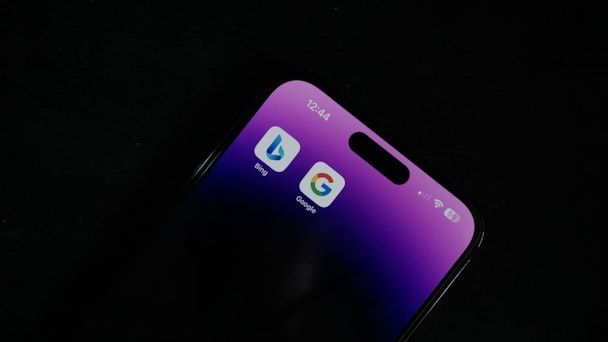Bard or Bing? Here’s how The&Partnership has been using both gen AI tools
As part of our series examining how businesses are using generative AI in their work, we look at how one WPP agency has integrated both Google’s and Microsoft’s chatbot tools.

The&Partnership is using both Bard and Bing in its work – for now / Adobe Stock
Conversational text tools have become standard bearers for the potential of generative AI. ChatGPT, rather than image-making tools such as Midjourney, kicked off the current rush to adopt the technology within the ad industry.
But in the months since its release, it’s already been superseded by Microsoft and Google products Bing and Bard. Bing relies on ChatGPT’s technology but has different features to that tool, including a connection to the web that makes it much more useful for search and a contemporary underlying dataset (ChatGPT’s training data does not include anything from after 2021). Bard, meanwhile, was released by Google worldwide in May and is based on the LaMDA large language model. Both tools are currently available for use free of charge.
Advertisement
WPP agency The&Partnership’s team has been “experimenting with intent” since each tool launched in March, says head of innovation Oli Feldwick.
The agency has settled on a policy of making staff “super users of tools” rather than building its own and Feldwick has been training his colleagues on the use of Bard and Bing. Both have been useful for basic idea generation, especially for copy-heavy projects.
“Say we have to create a bunch of SEO blog posts or some content articles that will go with a campaign, we’ll use it to help,” he says. “We won’t use it to do everything but it will be potentially used to come up with initial ideas that you’ll then expand on. Both Bard and Bing can be really helpful for research.”
Advertisement
The team has found Bing useful for analyzing briefs through specific frameworks. “Say we’re doing a strategic piece on brand positioning and want to use Jung’s archetypes. We can ask it to do an assessment of four different brands and say which archetypes they fit.
“You wouldn’t use Bard or Bing to write an ad. But sometimes we’ve given it a lot of information and asked it to write a mood film or suggest scenes or script structure. In getting to a first draft these things can be quite helpful.”
Though the interfaces are pretty similar, there are some differences that matter. “Bing is a custom layer on top of the GPT model. It has access to the internet and a slightly different sort of training,” he explains. The connection to the web and the ability to perform a search request (unlike most versions of ChatGPT) is the tool’s “main strength,” he says: “Bing will be able to search the internet, do its own research to an extent and give you its own take based on that.”
The answers to those queries, though, are a little unpredictable. “It’s not an oracle, so not everything it says is accurate or true. It gives you avenues that you need to fact-check and validate yourself. That can be interesting if you’re using it for ideation, but makes it more unpredictable if you’re trying to use it to help you write SEO blog topics. But if you prompt it in the right way – asking for citations and links – it will become more accurate.”
Suggested newsletters for you
Feldwick says its inaccuracies – or offbeat answers – can be useful in their own way. “David Bowie was hugely passionate and enthusiastic about the internet and in the 90s he built a tool called the Verbasizer. It spat out little snippets that would prompt lyrics or a concept for a song. If that was good enough for Bowie in the 90s then it should be good enough for us in our day jobs.”
Both tools can upload CSV spreadsheet files and PDFs, making it possible to have them analyze long files and speed up the research process. Bard’s ability to ‘read’ images in prompts sets it apart, he says. “You can put a wireframe or a diagram and ask it to write a code that would replicate it, or describe what’s in the image.”
But Feldwick is doubtful that Bard will continue to be available free of charge, which makes it hard to commit to using it in the long term. “We don’t know long-term what Google’s commercial model is going to be. At the moment it is putting out a lot of tools that are going to be great; one assumes they won’t be free for everyone forever.“
At this stage, Feldwick says the agency is not allowing staffers to upload client documents to either system. “That would be a breach of your client contract. The big thing holding us back isn’t the capabilities of the tools, it’s the boring stuff – the logistics of how we access it properly.”
The agency will likely favor the developer that solves those thorny legal issues first. “Microsoft is doing a lot around building bespoke instances of the GPT model that you could access. With a private large language model environment, you’re much safer. That will take away some problems.”

